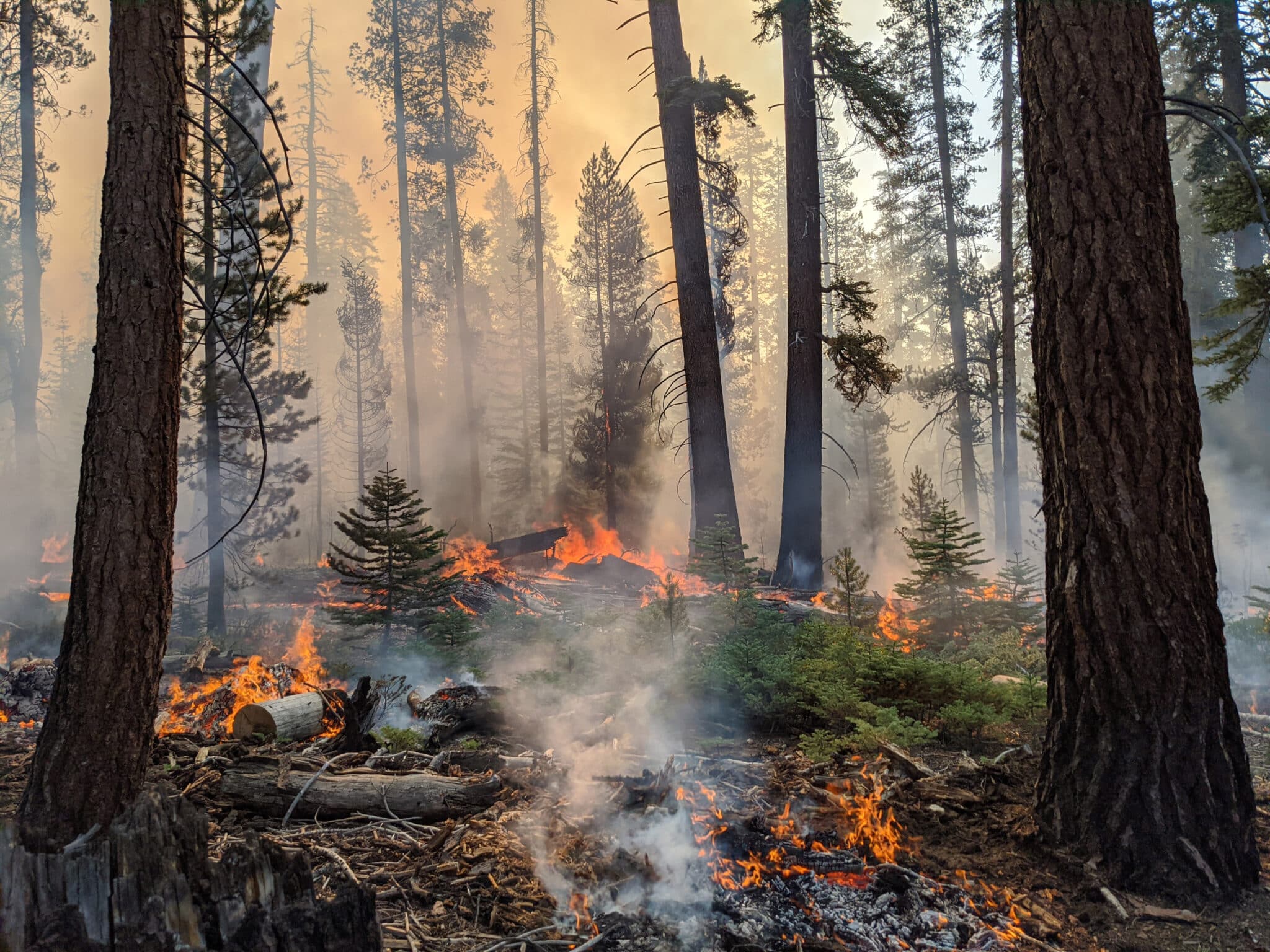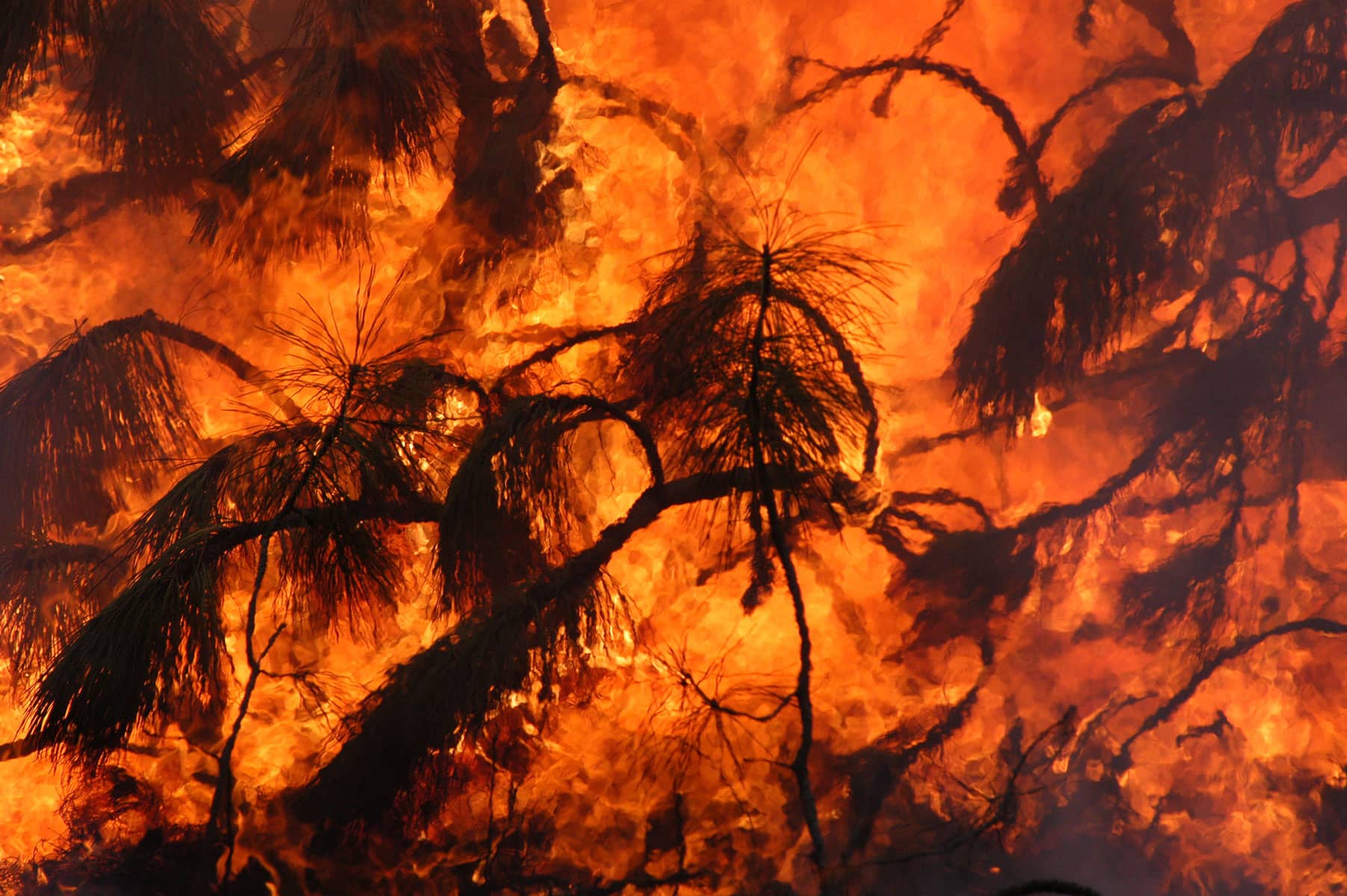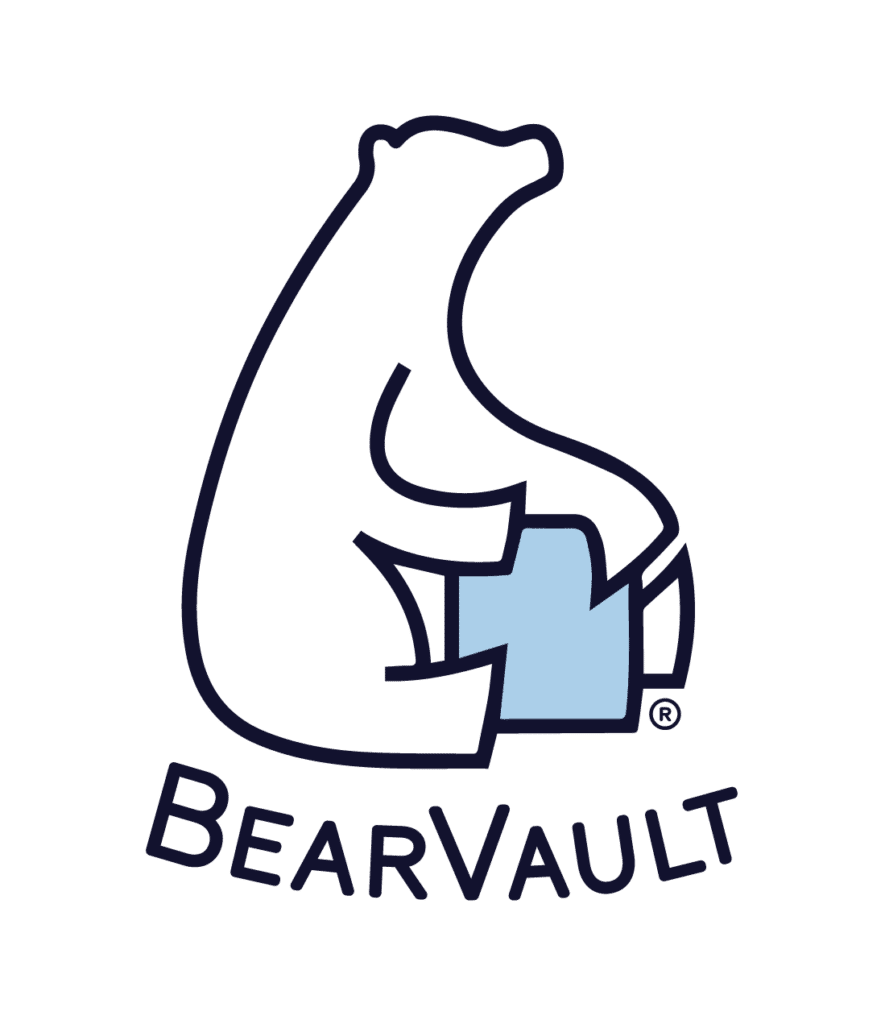Backpacking During Wildfire Season – What You Need to Know
If you’re looking to go backpacking during wildfire season, you should think about what all that could entail. The possibility of dealing with one while on the trail can’t be ignored, and it’s important to have a safety plan in mind.
Why? Because fires are extremely disorienting. Ask me how I know…
Once upon a time, a wildfire caused emergency services to evacuate my neighborhood. I stayed and fought, joining dozens of others determined to protect their homes.
This wasn’t a giant rager. It licked its way across mown lawns at just inches high. But it was wild how disorienting the smoke, heat, and flickering flames could be. At one point, I found myself surrounded on three sides and had to give ground.
Let’s take a minute to look at some facts about wildfires and safety and then discuss what to do in a wildfire situation.

Wildfire Facts
There are so many interesting facts about wildfires in North America. Learning about them can help us grasp both the seriousness of the issue and how these flames offer benefits to ecosystems and the natural landscape.
How many acres burn each year?
Since the year 2000, an average of 7 million acres have burned each year, according to Congressional Research Service.
How are most wildfires started?
The vast majority of wildfires in the U.S. (approximately 85%, according to the US Forest Research Data Archive) are started by accident by people. Tossing a cigarette butt on dry grass and leaving campfires unattended are common causes.
Can lightning cause wildfires?
Yes, lightning does start wildfires. Dry conditions paired with dry thunderstorms (storms with rain that evaporates before reaching the ground) are a particularly dangerous combination. The extended drought in certain parts of the US has contributed to a recent rise in lightning fires.
Many of the largest fires in recent years have been attributed to lightning strikes. That’s often because fires started by lightning can originate deep in wilderness areas, while human-started fires are usually closer to roads and the infrastructure needed to fight them.

Are there different types of wildfires?
Wildfires can spread in one of three ways. Surface fires run on underbrush, grass, and small trees, burning across the surface of the ground. These are the most common. If they have the right conditions, they can turn into a “crown” or “ground” fire. Crown fires are when treetops catch, and flames spread from treetop to treetop. These are particularly dangerous due to how quickly the wind can spread them and change their direction. Ground fires are when buried fuel catches fire and smolders underground. These fires can burn for months with little above-ground signs.
Is fire always a bad thing for nature?
Not at all! Land management agencies use prescribed burns to help certain species of vegetation thrive. By controlling small fires, they can remove excess underbrush and help establish healthy plant life, simultaneously aiding dependent animal species.
What is the most common season for wildfires?
Wildfire season stretches from late fall through the end of winter. Dormant trees and dead grass are the fuel a fire needs to grow and spread. When this season of dormancy comes after particularly dry weather, the settings are prime for wildfires.
Is hiking during wildfire season dangerous?
While there have been hikers who have been injured or killed in wildfires before, there are things you can do to stay safe even in the event of a wildfire. Check out the next section for safety tips.
Wildfire Safety for Backpackers
As with most safety concerns while backpacking, fire season makes planning and spatial awareness critical.
Know Your Surroundings
While planning a backpacking trip, take some extra time to think through a wildfire scenario. Study your topographical map and note water sources and natural fire breaks. When on the trail, always know where you’re at.
Stay Alert
It may be easy to zone out on the trail, but practicing presence is good for more than your mental health. Using all your senses is the best way not to let danger sneak up on you. If the wind is right, your nose might be the first to pick up hints of smoke. At other times, your eyes might see it on the horizon.
Have a Plan
Knowing what your best move is before you need to make it is the ultimate power play. You don’t have to stay in a state of constant hyper-vigilance. But as your surroundings change, take a moment to reassess and make a plan for the new scenario.
Understanding how wildfires typically behave can make all this more feasible. Let’s take a look at some things that can help you predict what a wildfire is going to do so you can respond accordingly.
Wildfires Travel Faster Uphill
Because heat rises, fires that are burning on a slope create a path of drier fuel on the uphill side. That drier fuel goes up in flame easier and burns out faster, making the wildfire cover more ground in less time.
Since wildfires travel faster uphill, going downhill will give you a better chance of getting away.

Wildfires Travel With the Wind
Every little breeze counts when there’s an open flame. That wind that makes it hard to start your little campfire gives wild ones wings. Whichever direction the wind is heading, it’s likely that the fire is heading there, too.
It’s important to note, though, that other things play into this. Fire also follows fuel, so ample fuel in an anti-wind direction CAN make fire act weird. But it’s hard work going against the wind, and travel will be slower.
Since wildfires generally travel with the wind, you can choose your direction of travel accordingly.
- If the fire is ahead of you and the wind is at your back, wait where you are to confirm it’s traveling away from you.
- If the fire is behind you and the wind is in your face, keep going straight.
- If the fire is ahead of you and the wind is in your face, turn and travel at an angle to allow the fire to pass.
- If the fire is behind you and the wind is at your back, try angling your line to allow the fire to pass.
Wildfires Can Be Stopped
Part of fighting wildfires is creating fire breaks. This can look like tilling up the soil with a tractor and plow or lighting a controlled fire ahead of the wild one to use up all the fuel. Sometimes, if you’re lucky, Nature provides firebreaks of her own.
Find a river to swim across. Cross an open meadow to escape a crown fire. Head towards areas of sparse vegetation that will starve the fire. Since wildfires can be stopped, looking for a natural firebreak can be your ticket out of trouble.
Knowing how wildfires behave can help you make a plan and stay safe.
How to Prepare for a Wildfire When Backpacking
If you’re on the trail and see or smell smoke, take precautionary action. Go towards the nearest water source that’s not downwind from the smoke. Wet a piece of cloth to breathe through to protect your lungs. If you have a means of communication, use it.
What to Do in a Wildfire
In a worst-case scenario, the most important thing you can do is to keep your wits. Hopefully, you’ve kept yourself oriented as you go, so decision-making can come easily. But if you’re surprised by a wildfire and don’t know where you are, travel downhill away from the fire. Find water as quickly as possible. The more, the better.
Putting distance between you and the fire is critical. BUT if you manage to find a substantial body of water to submerse yourself in, don’t leave it. Slather mud on your face and head and throw on a wet cloth to filter smoke and protect from falling embers.

How to Prevent Wildfires
The number one way to prevent wildfires while you’re in the backcountry is to be a responsible fire user. Never leave your campfire unattended. Make sure it’s 100% out before moving on from camp. Or, you could always just avoid open flames altogether by cooking on a stove or living on granola bars and jerky. Don’t smoke as you hike, and never toss cigarette butts from your car window.
When deciding whether or not to have a fire, stay informed of recent weather patterns and current drought situations. If you’re camping in a tinderbox situation, striking a match isn’t a good idea. Local burn bans will let you know what the level is for fire danger, so check that before you hit the trail.
Responsible Recreation Applies to All Areas
We never found out how that one fire in our old neighborhood started. But you’d better believe that I’m extremely cautious about ensuring intentional fires are out before my head hits the pillow! As I write this article, the smell of smoke lingers from a small burn we did earlier. I think I’ll go check it one last time before calling it a day.
We talk a lot about being responsible while enjoying the outdoors. That’s a value that extends to all kinds of issues, not just bear safety and fire prevention. If we value our wild places, we’ll do our best to protect them, one way or the other. Let’s work together to prevent disasters of all kinds.
Author Profile

Jessica Cockroft
Jess merges her passion for words and an insatiable longing for adventure as an outdoor freelance content writer and marketer. When she’s not busy stringing words together you’ll probably find her planning another camping trip for her crew of kids or taking care of the homestead. You can find her on LinkedIn and Instagram, as well as on her own website.



